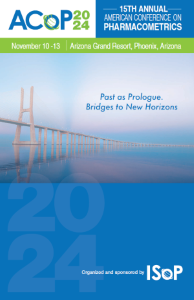Mind the gap – successful bridging of QSP and PMX in drug development
The best of both worlds? Integration of QSP and PMx modeling in support of MIDD in oncology
Monday, November 11, 2024
3:55 PM – 4:15 PM MST
Location: Sonoran Sky Ballroom 1 - 4

Blerta Shtylla, PhD (she/her/hers)
Research Fellow
Pharmacometrics & Systems Pharmacology, Pfizer Research and Development, La Jolla, CA, United StatesDisclosure information not submitted.
Speaker(s)
Quantitative systems pharmacology models are becoming a standard component of MIDD strategies for dose and regimen optimization and clinical trial design, often appearing alongside more standard pharmacometrics approaches in BLA/NDA submissions. While both modeling approaches can have significant areas of overlap in the clinical setting e.g. a shared focus on capturing heterogeneity and variability through use of virtual populations (Vpop) and population modeling, significant differences exist due to high mechanistic complexity to describe disease biomarkers for QSP and a more heuristic data-driven PMx approach that more naturally lends itself to identification of key (typically non-mechanistic) covariates to explain between-subject variability. As QSP modeling and simulation approaches in the clinical setting have been rapidly maturing it is now time to ask the question: How do we get the best of both worlds? First, I will discuss our experiences at Pfizer of co-developing and then integrating a QSP model of CD3 bispecific T cell engager mechanism of action in relapsed and refractory multiple myeloma patients with a PMx model for cytokine driven adverse events used to support global submission and approval of Elrexfio (erlatanamab). Second, I will give an example of a multi-scale QSP model for a small molecule inhibitor applied to a solid tumor indication using a novel method for virtual clinical trial simulations that connects QSP Vpop outputs of tumor size to progression free survival endpoints through use of time to event modeling. For both examples, I will outline areas for additional future integration of QSP model outputs via PMx & data driven approaches that permit robust projection of clinically relevant oncology endpoints, such as ORR and PFS.

